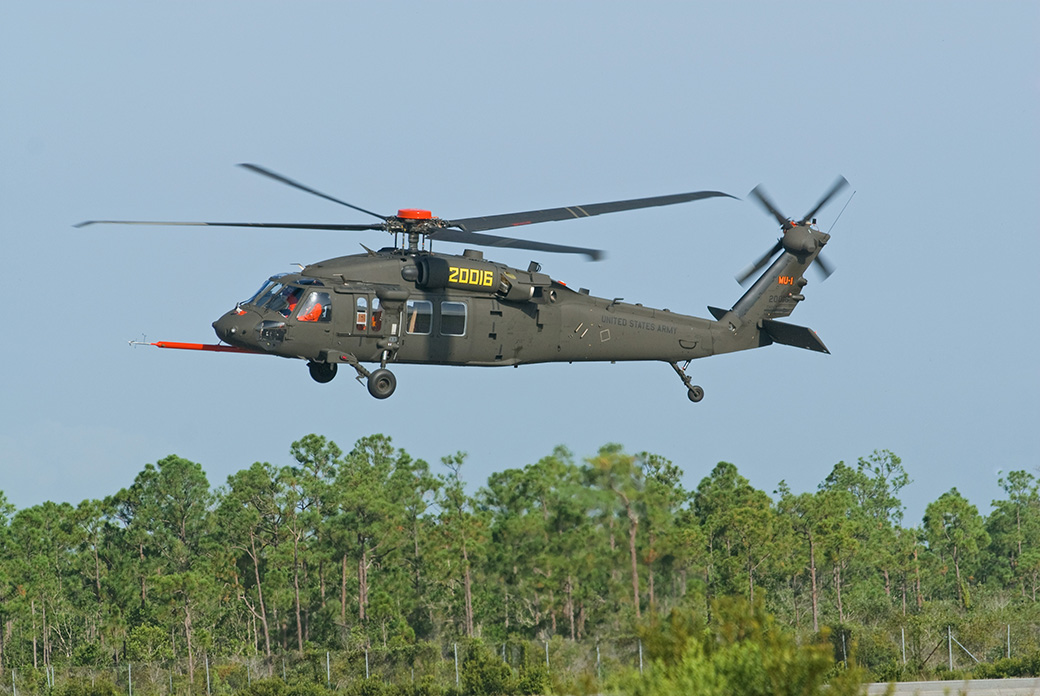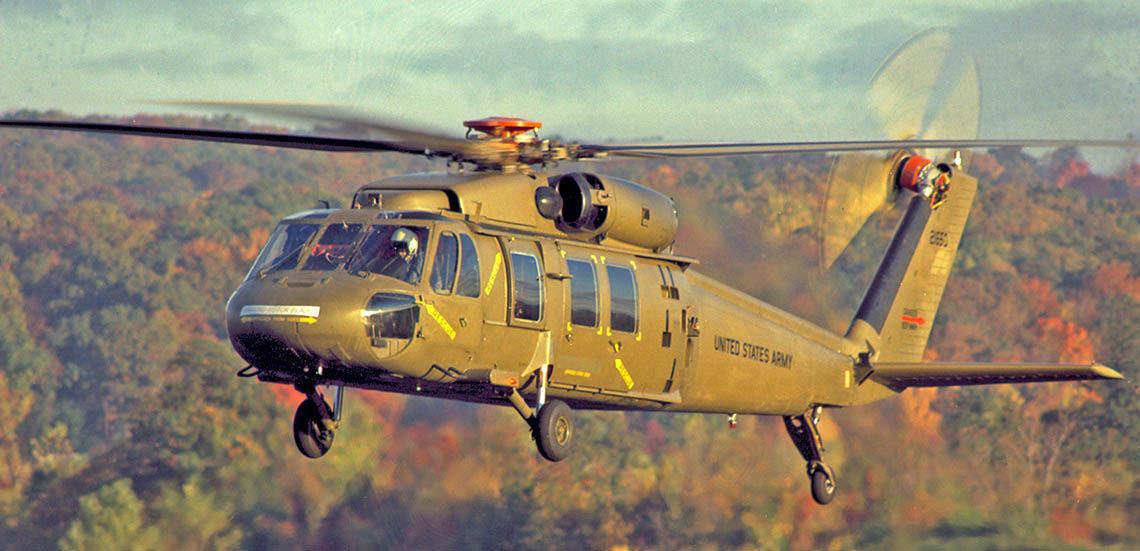Inside the Sikorsky S 70: What Sets This Helicopter Apart from Its Competitors
Inside the Sikorsky S 70: What Sets This Helicopter Apart from Its Competitors
Blog Article
High-Performance Multi-Role Rotorcraft Featuring Advanced Cabin Technologies and Integrated Sensor Equipments
The realm of rotorcraft technology has actually seen notable improvements in recent times, particularly in the world of high-performance multi-role rotorcraft outfitted with advanced cabin technologies and seamlessly integrated sensor systems. These technologies have not only enhanced the operational capabilities of rotorcraft yet have also substantially influenced modern aeronautics procedures on numerous fronts. From enhanced goal convenience to enhanced operational performance, the merging of advanced cockpit innovations and incorporated sensing unit systems has ushered in a new period of opportunities for rotorcraft applications. In the adhering to discussion, we will explore the advancement of rotorcraft modern technology, look into the realm of sophisticated cockpit technologies, and take a look at the effects of incorporated sensing unit systems on the operational versatility and effectiveness of modern rotorcraft.
Advancement of Rotorcraft Modern Technology
The evolution of rotorcraft innovation has been marked by substantial advancements in the rules of aerodynamics, materials, and propulsion systems, shaping the capabilities and efficiency of modern-day rotorcraft. Aerodynamic renovations have actually enhanced the effectiveness and maneuverability of rotorcraft, enabling increased rate, dexterity, and security during flight (sikorsky s 70). Developments in products, such as the use of composite products and advanced alloys, have actually resulted in lighter yet more powerful rotorcraft frameworks, boosting overall efficiency and sturdiness. Additionally, developments in propulsion systems, consisting of extra effective engines and innovative propulsion technologies, have allowed rotorcraft to attain greater elevations, faster speeds, and better payloads.
These developments have not just transformed the capacities of rotorcraft but have likewise expanded their applications across various sectors, including armed forces, industrial, and emergency situation solutions. The constant evolution of rotorcraft innovation proceeds to drive development in the area, pressing the boundaries of what is possible and shaping the future of vertical trip.
Advanced Cabin Innovations
Building upon the foundational developments in aerodynamics, materials, and propulsion systems, the world of rotorcraft modern technology now shifts emphasis towards pioneering Advanced Cabin Innovations. The combination of advanced modern technologies within the cabin environment plays a vital duty in enhancing the functional capabilities, safety, and performance of modern rotorcraft. sikorsky s 70. Advanced Cockpit Innovations encompass a wide selection of features developed to supply pilots with boosted situational awareness, streamlined data monitoring, and instinctive control interfaces
One of the crucial innovations in cabin style is the application of glass cabins, which replace typical analog determines with high-resolution display screens. These digital systems use personalized formats, real-time information combination, and improved readability, enabling pilots to access crucial details at a look. In addition, progressed avionics systems, such as fly-by-wire controls and increased reality screens, are reinventing exactly how pilots engage with the airplane, permitting precise control and boosted decision-making abilities.


Incorporating innovative cabin advancements not just enhances pilot performance but additionally adds to overall mission performance and security in complicated operational environments. By leveraging advanced modern technologies within the cockpit, rotorcraft producers are setting brand-new criteria for operational quality and objective success.
Integrated Sensor Equipments
With the development of rotorcraft innovation, the combination of innovative Integrated Sensing unit Solution has actually become paramount in improving functional performance and safety. These Integrated Sensor Systems include a large array of innovations that give critical information for different features such as navigation, surveillance, targeting, and ecological monitoring. By flawlessly integrating sensors like radars, video cameras, lidar, and infrared systems into rotorcraft, operators can take advantage of improved situational understanding, improved mission capacities, and lowered pilot workload.
One key benefit of Integrated Sensing unit Systems is their capacity to gather real-time information and give workable understandings to pilots and mission operators. Advanced radar systems can find and track targets you can find out more over long distances, allowing for early threat discovery and reliable reaction planning. Additionally, integrating electro-optical and infrared video cameras allows rotorcraft to perform reconnaissance and surveillance goals with accuracy and accuracy.
Fundamentally, the combination of innovative sensor modern technologies right into rotorcraft not just enhances operational performance yet also adds significantly to general objective success and team safety. As rotorcraft proceed to evolve, the role of Integrated Sensor Solution will unquestionably remain at the leading edge of advancement in the aerospace industry.
Functional Versatility and Efficiency
Enhancing functional convenience and effectiveness in rotorcraft is a natural progression from the combination of innovative Integrated Sensing unit Systems. By leveraging the data and understandings given by these sophisticated sensor systems, rotorcraft can enhance their performance across numerous goals and settings.
Functional convenience encompasses the capacity of rotorcraft to adapt to various functions and circumstances efficiently. With innovative cabin modern technologies and integrated sensing unit systems, rotorcraft can seamlessly change in between tasks such as search and rescue, clinical discharge, security, and much more. This flexibility improves the rotorcraft's capacity to satisfy diverse operational needs without needing comprehensive reconfiguration.
Effectiveness in rotorcraft procedures is critical for making the most of objective efficiency useful reference and resource utilization. Integrated sensor systems play a crucial function in improving functional performance by giving real-time information on weather, surface mapping, target monitoring, and a lot more. This data enables pilots to make educated decisions swiftly, optimize flight paths, preserve fuel, and improve general goal performance.
Impact on Modern Air Travel Operations

Furthermore, the integration of sophisticated sensing units assists in boosted objective preparation and execution, allowing rotorcraft to do a large range of jobs with enhanced accuracy. From search and rescue procedures to aerial firefighting and legislation enforcement missions, the capacities of modern rotorcraft geared up with sophisticated cockpit technologies and incorporated sensor systems are unequaled.
Moreover, the effect of these improvements prolongs beyond operational effectiveness to cost-effectiveness and sustainability. By optimizing flight courses, fuel intake, and upkeep timetables, high-performance rotorcraft outfitted with advanced cockpit innovations and sensors add to minimizing operational prices and environmental effect, making them vital properties in modern air travel procedures.
Verdict
To conclude, the high-performance multi-role rotorcraft with innovative cabin innovations and incorporated sensing unit systems stands for a substantial evolution in aeronautics innovation. These advancements boost functional adaptability and effectiveness, eventually influencing contemporary air travel operations in a favorable method. The integration of these innovative innovations permits enhanced capacities and click efficiency in numerous mission scenarios, showcasing the proceeded improvement of rotorcraft modern technology in the air travel market.
The world of rotorcraft technology has actually seen notable developments in recent times, particularly in the world of high-performance multi-role rotorcraft outfitted with cutting-edge cabin modern technologies and seamlessly integrated sensor systems. From boosted goal versatility to enhanced functional performance, the merging of advanced cockpit modern technologies and incorporated sensor systems has actually ushered in a brand-new age of possibilities for rotorcraft applications. In the adhering to discussion, we will discover the advancement of rotorcraft innovation, dive into the world of sophisticated cabin developments, and examine the ramifications of incorporated sensing unit systems on the operational convenience and performance of contemporary rotorcraft.

Report this page